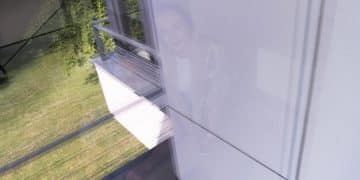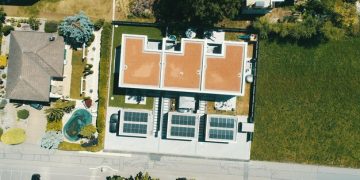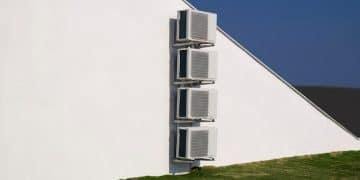Smart Window Film: Energy Bill Savings in 2025 for US Homes

Smart window film can significantly reduce energy bills in 2025 by regulating indoor temperature, potentially saving US homeowners up to 30% on cooling and heating costs through decreased energy consumption.
Are you looking for ways to cut down on your energy bills? In 2025, smart window film offers a promising solution for homeowners in the US, promising to significantly reduce energy consumption and lower those monthly expenses. Let’s explore how this innovative technology can impact your wallet and keep your home comfortable.
Understanding Smart Window Film and Its Benefits
Smart window film, also known as dynamic or switchable window film, is a high-tech material applied to existing windows. It changes its transparency to regulate the amount of light and heat entering a room. This adaptability can significantly impact your energy usage and overall comfort.
How Smart Window Film Works
The film contains tiny particles that respond to electrical stimuli, adjusting the tint level. This allows you to control the amount of sunlight and heat passing through the window, reducing the need for air conditioning in the summer and heating in the winter.
Benefits Beyond Energy Savings
Aside from reducing energy bills, smart window film offers several additional benefits. It can minimize glare, protect furniture from UV damage, and increase privacy, making it a versatile addition to any home.
- Reduces glare and eye strain, enhancing visual comfort.
- Protects interiors from harmful UV rays, preventing fading.
- Increases privacy with adjustable tint levels.
- Enhances the aesthetic appeal of your home.
Smart window film provides a comprehensive solution for energy efficiency and enhanced living comfort, making it a worthwhile investment for homeowners looking to upgrade their properties. It adapts to various needs, offering benefits beyond just cost savings.
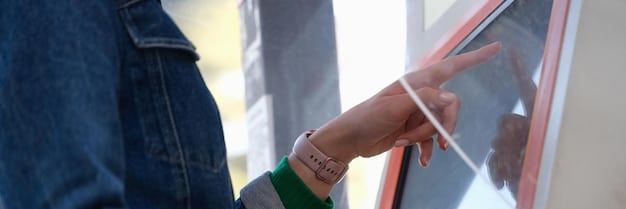
Potential Energy Bill Reductions in 2025
Estimating the exact amount smart window film can reduce your energy bills requires understanding the numerous factors influencing these savings. However, we can explore potential ranges and provide some helpful context.
Key Factors Influencing Savings
Several elements affect how much you could save, including the climate in your area, the size and orientation of your windows, and your existing HVAC system’s efficiency. Homes in hotter climates typically see more significant savings due to reduced air conditioning usage.
Estimating Potential Savings
Based on current data and projections for 2025, homeowners can expect to see energy bill reductions of anywhere from 10% to 30%. For example, a home spending $300 per month on energy could save between $30 and $90 monthly.
- Climate: Hotter regions can see up to 30% savings.
- Window Size: Larger windows benefit the most.
- HVAC Efficiency: More efficient systems amplify savings.
- Orientation: South-facing windows have the greatest impact.
While the exact amount varies, substantial savings are achievable with smart window film. Consider these factors when evaluating the potential return on investment for your home. Understanding these elements can help set realistic expectations for how much you might save.
Comparing Smart Window Film to Other Energy-Saving Solutions
While smart window film is promising, it is essential to compare it with other energy-saving options. This provides a broader perspective and helps you choose the most suitable solution for your home.
Window Replacement vs. Smart Film
Replacing old windows with energy-efficient models is a classic approach, but it can be very costly. Smart window film offers a more affordable alternative, providing similar benefits without the expensive installation.
Blinds and Curtains
Traditional blinds and curtains can help block sunlight, but they don’t offer the dynamic adjustability of smart window film. The film automatically adjusts to changing light conditions, providing consistent energy savings.
Insulation Upgrades
Improving insulation is crucial for energy efficiency, but it mainly addresses heat transfer through walls and ceilings. Smart window film specifically targets heat gain through windows, complementing insulation efforts.
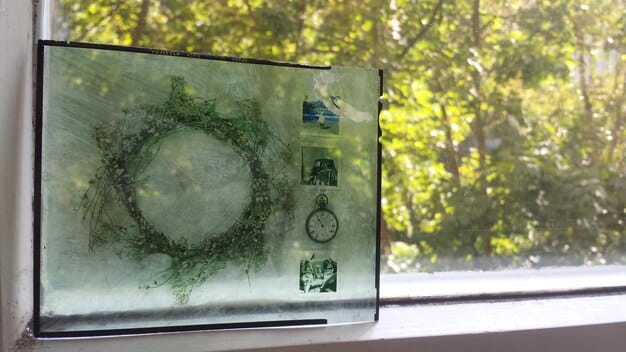
- Cost: Smart film is generally cheaper than window replacement.
- Installation: Easier to install than replacing windows or adding insulation.
- Adjustability: Provides dynamic control unlike static blinds or curtains.
- Comprehensive Savings: Complements other energy-saving upgrades.
Smart window film distinguishes itself with its blend of affordability, ease of installation, and dynamic control. While other solutions offer similar benefits, smart film provides a balanced approach to energy savings. Understanding these comparisons helps make a sound decision that caters to your specific needs and budget.
Installation and Maintenance of Smart Window Film
Proper installation and maintenance are critical to maximizing the benefits and longevity of smart window film. This section will guide you through the key steps and considerations for ensuring your investment pays off.
Professional vs. DIY Installation
While some homeowners opt for DIY installation, professional installation is highly recommended. Professionals have the expertise to ensure the film is applied correctly, avoiding bubbles, wrinkles, and other issues that can compromise performance.
Maintenance Tips
Maintaining smart window film is straightforward. Regularly clean the film with a soft cloth and a mild, non-abrasive cleaner. Avoid harsh chemicals and abrasive materials that can damage the surface.
Troubleshooting Common Issues
Common issues include peeling, discoloration, and malfunctioning tinting. Addressing these issues promptly can prevent further damage and extend the lifespan of the film. Contact a professional for repairs if needed.
- Professional Installation: Ensures proper application and performance.
- Regular Cleaning: Use a soft cloth and mild cleaner.
- Avoid Harsh Chemicals: Prevent damage to the film surface.
- Prompt Repairs: Address issues like peeling or discoloration quickly.
By following these installation and maintenance guidelines, you can ensure your smart window film provides optimal energy savings and lasts for years. Proper care will not only enhance the film’s performance but also protect your investment.
Cost Analysis: Is Smart Window Film Worth the Investment?
Determining whether smart window film is a worthwhile investment requires a detailed cost analysis. This involves evaluating the initial costs, potential savings, and long-term benefits.
Initial Costs
The initial cost of smart window film includes the price of the film and the installation fees. Prices vary depending on the window size, type of film, and installer. On average, expect to pay between $50 and $100 per square foot.
Long-Term Savings
The long-term savings come from reduced energy bills. As mentioned earlier, homeowners can expect to save between 10% and 30% on their cooling and heating costs. Over time, these savings can offset the initial investment.
Return on Investment (ROI)
Calculating the ROI involves comparing the initial cost to the cumulative savings over the film’s lifespan. Typically, smart window film pays for itself within 3 to 7 years, depending on your energy consumption and climate.
- Initial Cost: $50-$100 per square foot.
- Energy Savings: 10%-30% reduction in cooling and heating costs.
- ROI: Payback period of 3-7 years.
- Increased Home Value: Adds value through energy efficiency.
Smart window film presents a compelling case for investment, balancing up-front expenses with lasting savings. By understanding the costs and potential financial benefits, homeowners can make informed decisions that align with their energy-efficiency objectives. This analysis confirms that smart film is not just an expense but a genuine investment for the future.
Future Trends in Smart Window Film Technology for 2025 and Beyond
Looking ahead to 2025 and beyond, smart window film technology is poised for significant advancements. These emerging trends promise to enhance energy efficiency and overall functionality.
Improved Energy Efficiency
Future smart window films are expected to offer even greater energy efficiency. Innovations in materials and design will allow for more precise control over light and heat transmission, maximizing energy savings.
Integration with Smart Home Systems
Seamless integration with smart home systems is another key trend. Future films will be able to communicate with thermostats, lighting systems, and other smart devices to optimize energy usage automatically.
Enhanced Durability and Lifespan
Manufacturers are working on enhancing the durability and lifespan of smart window film. Improved materials and coatings will make the film more resistant to wear and tear, extending its useful life.
- Higher Efficiency: Advanced materials for better light and heat control.
- Smart Home Integration: Seamless connectivity with other smart devices.
- Improved Durability: Longer lifespan and resistance to damage.
- Cost Reduction: Increased competition leading to lower prices.
The future of smart window film appears bright, with ongoing innovations promising greater affordability, efficiency, and integration. These trends will solidify smart window film’s place as a leading energy-saving solution for homes and businesses. Embracing these advancements will not only benefit consumers but also contribute to more sustainable living environments.
| Key Point | Brief Description |
|---|---|
| 💡 Energy Savings | Reduces cooling and heating needs, potentially saving 10%-30% on energy bills. |
| 🛡️ UV Protection | Protects furniture and interiors from harmful UV rays, preventing fading and damage. |
| 💰 Cost-Effective | Offers a more affordable alternative to window replacement with a payback period of 3-7 years. |
| 🏠 Smart Home Integration | Future films will seamlessly connect with smart home systems for optimized energy use. |
Frequently Asked Questions
▼
Smart window film can potentially reduce your energy bill by 10% to 30%, depending on your climate, window size, and the efficiency of your HVAC system. Homes in hotter climates typically see higher savings.
▼
While DIY installation is possible, professional installation is highly recommended. Professionals ensure proper application, avoiding bubbles and wrinkles, which can compromise the film’s performance and longevity.
▼
Smart window film can last anywhere from 7 to 10 years, provided it is properly installed and maintained. Regular cleaning and avoiding harsh chemicals can help extend its lifespan significantly.
▼
Smart window film can be applied to most types of windows, including single-pane, double-pane, and low-E windows. However, it’s essential to check the manufacturer’s recommendations to ensure compatibility and optimal performance.
▼
Unlike traditional window tinting, smart window film offers dynamic adjustability, allowing you to control the amount of light and heat entering your home. This dynamic control leads to greater energy savings and comfort.
Conclusion
In conclusion, smart window film represents a promising avenue for homeowners in the US to reduce their energy bills in 2025. Its ability to dynamically adjust to changing light conditions and provide significant energy savings makes it a worthwhile investment for those looking to improve their home’s efficiency and comfort.

